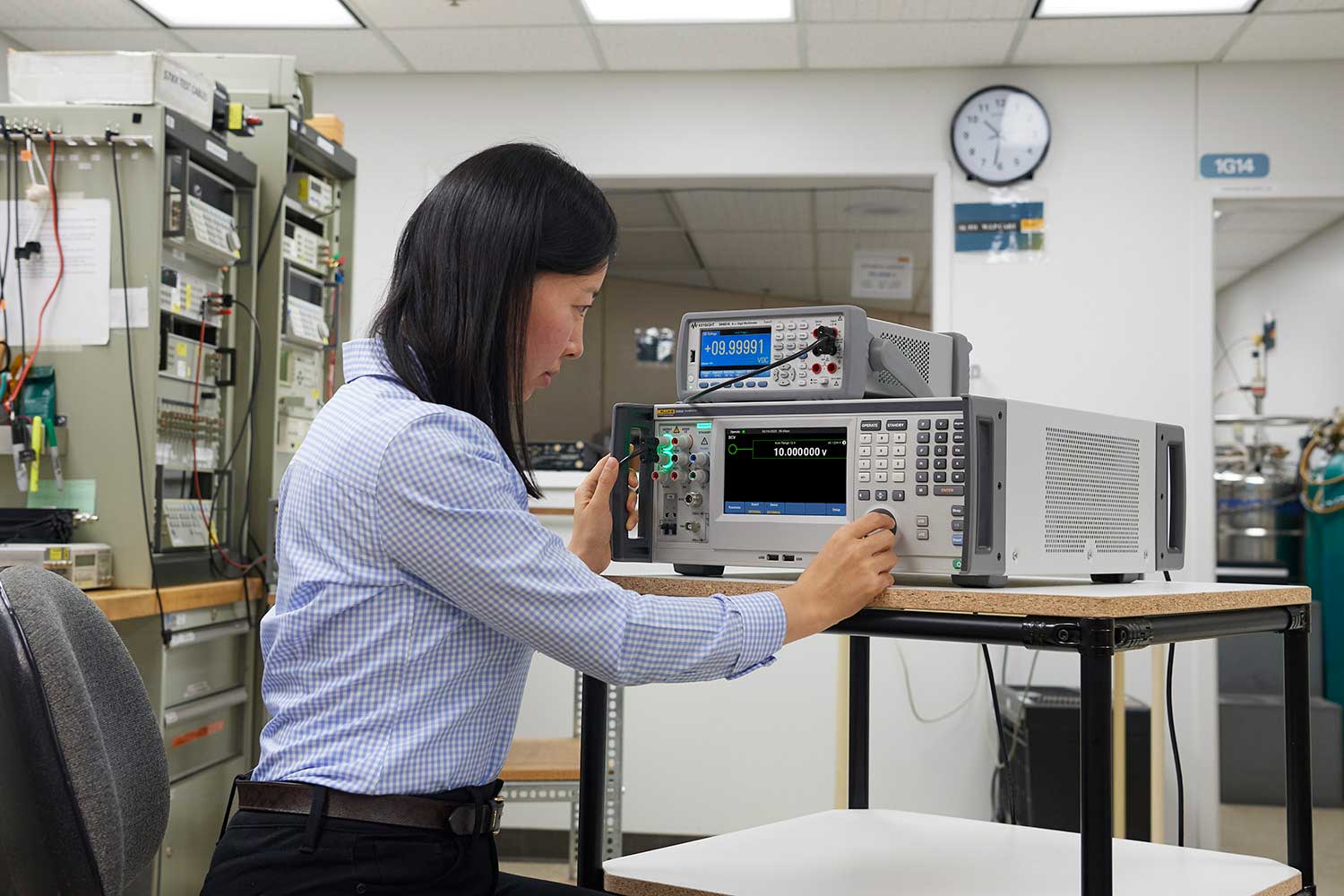Manufacturing requires accuracy for consistent outputs. But that isn’t easy to achieve if you don’t know what your inputs are. While instrument calibration may only slightly affect inputs, that can still significantly impact your outputs, the longevity of your equipment, and more. Calibrating your equipment ensures your readings are accurate and allows you to make necessary adjustments or repairs before any issues arise.
Instrument readings can change over time as instruments are exposed to harsh working environments, vibrations, temperature changes, and even accidents such as being dropped. Calibration ensures that your instruments produce accurate readings and that your equipment runs at peak performance.

What Is Instrument Calibration?
Instrument calibration compares an instrument’s readings to those on a calibrator or reference instrument. The instrument being tested may need to be adjusted to ensure it provides correct readings.
Many different types of instruments require calibration, and the process may look different depending on the readings being measured and the type of equipment. Regardless of the instrument being tested, calibration steps include:
- Ensuring the correct testing environment
- Running the calibration test, preferably more than once, to ensure accuracy
- Recording results
- Adjusting the instrument or sending it to be adjusted by an instrument calibration service, if necessary
- Testing again and recording the results after the adjustment
The proper calibration of instruments is key to your organization’s production and overall functionality. But there are many additional reasons to ensure your instruments are properly calibrated.
Why is instrument calibration important?
Regularly calibrating your instruments is necessary for many reasons. Depending on your industry, instrument calibration could be heavily regulated, and you could be subject to fines, product recalls, or other costly consequences if your instruments aren’t properly calibrated.
Safety: Inaccurate calibrations can cause safety issues for your employees. Machines and processes running at incorrect pressures or temperatures can create an unsafe work environment and even lead to employee injury, worker’s compensation claims, missed work, and other hardships for your employees.
Compliance: Certain industries have regulations that require calibration standards for production factors. For example, humidity and temperatures must be carefully controlled in food or pharmaceutical applications, and inaccurate readings can cause wasted or unsafe products.
Consistency: No matter what type of product you produce, your customers expect a certain level of consistency and quality. As the calibration of your instruments drifts over time, this can cause a decrease in the quality of your products, resulting in unhappy customers and recalled products, as well as damage to the reputation you’ve built for yourself.
Longevity: When temperatures, pressure, and other measurements are improperly calibrated, it can cause unnecessary wear and tear on your equipment. This can reduce the life of your machines, increase downtime, increase time spent on maintenance and repairs, and ultimately cost you money.
Cost savings: Calibrating machines takes time, but this is not an area where you want to cut corners. Properly calibrated machines waste less raw material, resulting in higher-quality outputs. They also function more smoothly, which will result in cost savings over the long haul.
When Should an Instrument Be Calibrated?
Now that we’ve discussed what calibration is and why it’s important, you may wonder how often you should calibrate your instruments. The answer varies widely depending on the instruments, the applicable outside regulations (such as by the FDA or other governing authority), the frequency with which the instrument is being used, and more.
Here are a few guidelines you can use to help determine your calibration frequency:
- Manufacturer’s recommendations: The manufacturer that created the instrument typically has a calibration frequency recommendation. However, compliance with regulatory agencies may require more frequent calibration.
- Before or after a critical measuring project: If you’re making decisions based on the output of your equipment, you’ll want to ensure everything is calibrated correctly so you can ensure your decision is made using the most accurate measurements.
- After an event: Instruments should be calibrated after an event, such as an accident or exposure to excessive vibration or other environmental stresses.
- At regularly scheduled intervals: These intervals could be monthly, quarterly, semiannually, or some other set interval time.
What Are the Types of Calibration?
Many different instruments that measure many different variables may need to be calibrated. Some of these variables include:
- Humidity
- Temperature
- Pressure
- Flow
- Radio Frequency
- Electrical
No matter what type of instruments are being calibrated, the calibration testing results and adjustments made must be documented to both maintain traceability and ensure compliance.
Fortunately, calibrating and documenting calibration efforts can be automated using calibration software. Calibration software simplifies the calibration process by ensuring consistency and efficiency in the calibration process. The software collects, stores, and analyzes data and helps ensure compliance with industry-wide standards like ISO 9000.
Fluke instrument calibration solutions offer a wide range of instruments for all types of calibration work, including software for calibration scheduling and documentation, as well as monitors, gauges, and many different types of calibrators.